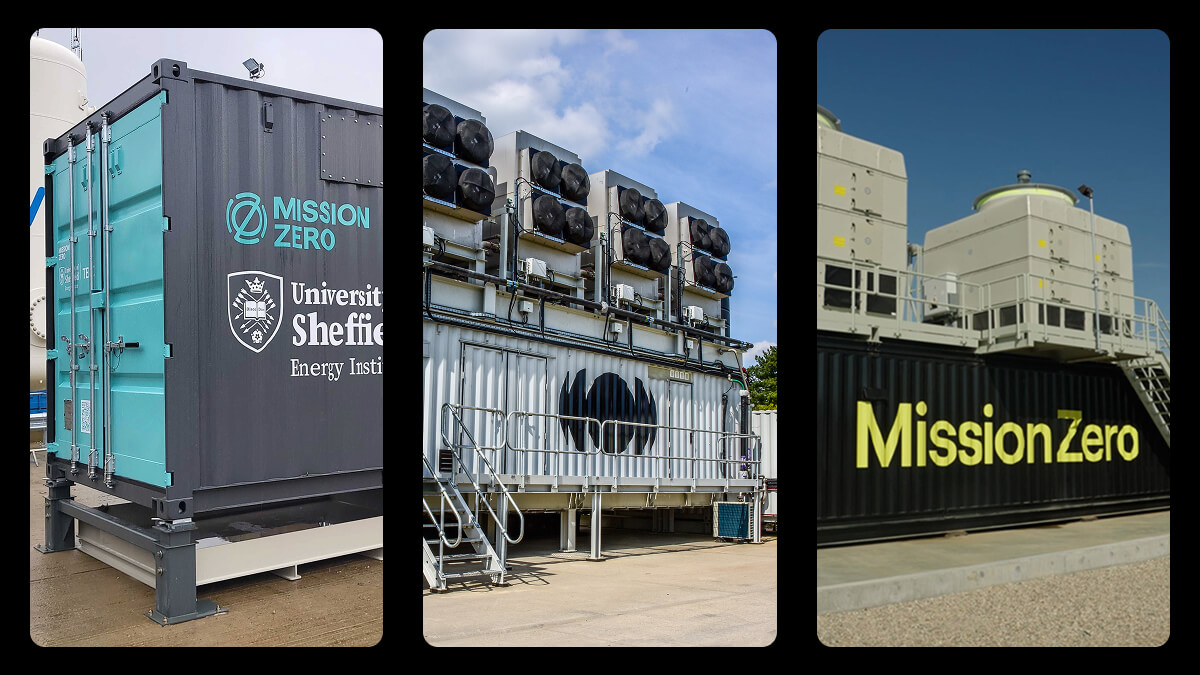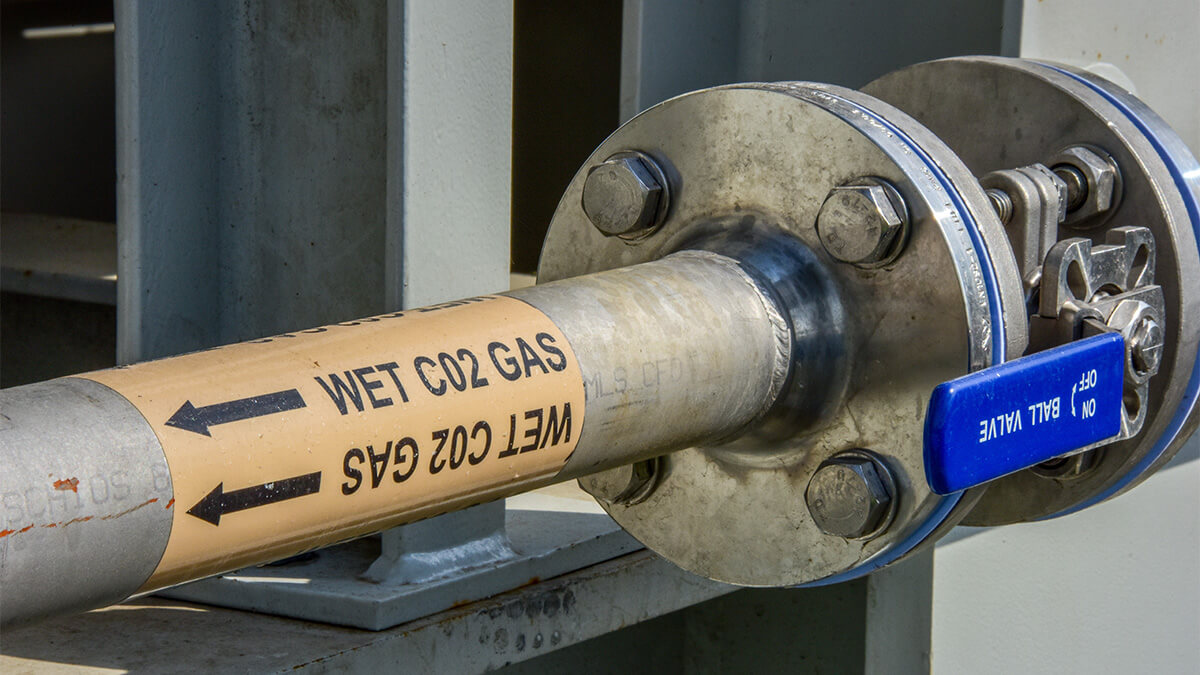In 2023, the National Oceanic and Atmospheric Administration measured global average atmospheric carbon dioxide at 419.3 parts per million (ppm) — the highest concentration ever recorded.
To stop this number from rising, we must drastically cut global emissions. Yet, the world’s leading climate scientists agree that this alone isn’t enough; we also need to rapidly scale carbon removal solutions to reduce it.
That’s where direct air carbon capture (DAC) comes in: offering one of the most versatile and land-efficient engineered solutions for rapidly recovering the excessive amounts of CO2 already in our atmosphere. After answering the first important question - what is direct air capture - the path forward takes a natural direction – how does DAC work and why exactly should we be paying attention?
In this post, we'll clarify the core principles behind how direct air capture works, using our own DAC solution as an example to put that theory into practice. We’ll also explore how DAC works from a broader climate mitigation perspective — from tackling today’s residual emissions, to addressing humankind’s historic industrial carbon footprint.
How direct air capture works: the chemical process
Direct air capture is a type of carbon capture solution designed to separate CO2 from the air around us. At its simplest, DAC technology pulls in ambient air and filters out the carbon from the other atmospheric gases in that air, producing CO2-depleted air which is returned to the atmosphere and a pure stream of CO2 ready for permanent removal or industrial use.

All DAC technologies can be baked down to two core stages: capturing atmospheric carbon in a medium and then releasing it from that medium. Here's how these principles work in broad strokes:
- Capture: Air is introduced to a reactive or adsorbent material that effectively binds CO₂. This can occur through either a chemical reaction or a physical adsorption process which usually either involves dissolving atmospheric carbon in a liquid solvent, or making it stick to the outside of a solid sorbent.
- Release: To get the carbon back out of your capture medium, the carbon-rich liquid or solid then undergoes a treatment process. This often involves altering conditions, such as increasing temperature, adjusting pressure, adding moisture, or changing electric voltage, to regenerate a pure stream of CO2.
To put that in perspective, here’s a brief explainer of the electrochemical direct air capture technology we’ve developed at Mission Zero, which uses water-based solvents and electrodialysis to efficiently strip CO2 from the air.
It's important to note when asking how direct air capture works that there are actually hundreds of different chemical pathways for achieving it. Scientists and engineers, like ourselves, are trying to work out how to rapidly scale this new climate technology for maximum impact. As such, you may have come across quite a few different types of direct air capture technology.
How direct air capture works: the bigger climate picture
While direct air capture isn’t a ‘silver bullet’ remedy to the climate crisis, it’s a key piece of the climate mitigation puzzle — helping us to remove the amount of CO2 in our atmosphere and circularise the carbon building blocks that global society still needs.
Reducing the amount of CO2 in our atmosphere
In the late 18th century, the Industrial Revolution saw a dramatic shift in global carbon behaviour, with the growth of economies becoming reliant on an open-ended use of fossil fuels which polluted carbon directly into the atmosphere.
Skip ahead 150 years to today, the net accumulation of this climate-warming gas in our atmosphere — along with the build-up of other greenhouse gases — has pushed our climate into crisis. The amount of CO2 in the atmosphere has simply overwhelmed our planet’s natural carbon removal systems (including forests, the ocean, and coastal carbon sinks) to draw it out of the atmosphere.
Alongside other carbon removal solutions, direct air capture provides a highly scalable, measurable, land-efficient, and location flexible tool to help permanently remove the excessive amounts of CO2 already in our atmosphere. This makes it a key tool for addressing humanity’s legacy industrial carbon emissions, which are no longer linked to a single source but which continue to drive the climate emergency.

Circularising the carbon global society still needs
In addition to eliminating historic carbon, direct air capture can also be part of decarbonising the carbon-based products and processes which enable our societies to build roads and housing, create medicines and textiles, and transport people and goods around the world.
As scientists, we know that anything the world currently makes from fossil carbons can actually be made from the CO2 in our air. By tapping into the CO2 in our atmosphere, DAC can therefore enable global industry to produce building materials, low-carbon synthetic fuels, and even fizzy drinks from air instead of oil.
With UNEP attributing 21% of global greenhouse gas emissions to buildings and construction in 2023, and recent estimates suggesting that demand for air transport will increase by an average of 4.3% per annum over the next 20 years, direct air capture works by plugging a circular source of sustainable carbon into existing processes in place of fossil fuels, whilst other options for decarbonisation remain limited (or impracticable due to limited timescales).

Learn more: The many uses of carbon dioxide: why we need CO₂
How does DAC work at scale?
Direct air capture is a powerful tool that allows global society to address historic and residual emissions, and build a sustainable, circular carbon economy.
Although we’re already scaling our direct air capture technology rapidly, to reach Net Zero by 2050, the world is going to need to deploy DAC systems large enough to recover gigatonnes of carbon from the atmosphere each year. This requires significant investment, committed policy support, and infrastructural development to start this decade.
Looking at the bigger picture, scaling DAC isn’t just about how the technology works — it's about how fast we can create the necessary systems and environment around it to fundamentally reshape our relationship with carbon. In recent decades, numerous ways to store carbon or to utilise it more sustainably have been developed and scaled. Now, DAC is here to fill in the missing piece and connect these pathways to the right carbon source - the atmosphere.
💡 Learn more: What does direct air capture CO2 actually cost at scale?







